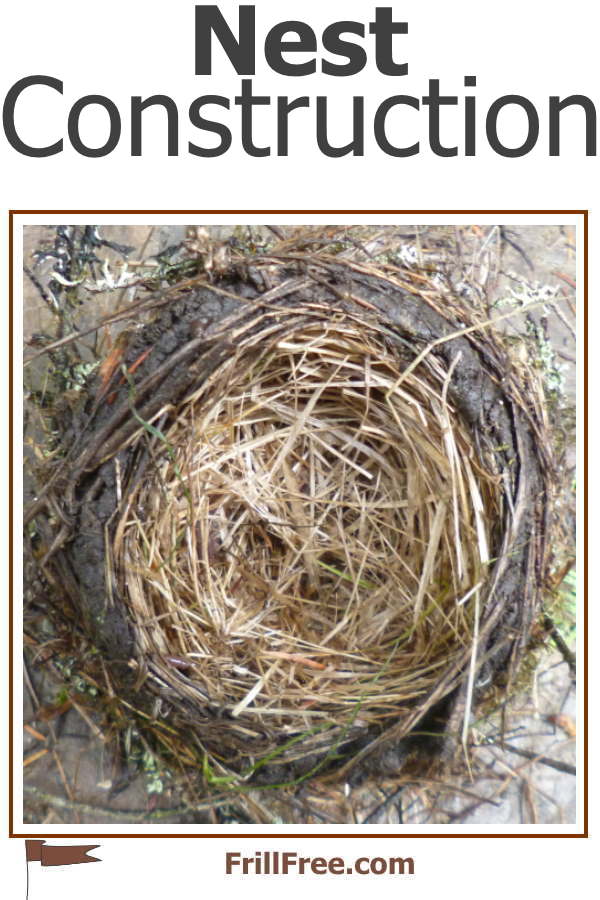- Homesteading
- Critters
- Nest Construction
Nest Construction
The Ultimate in Sustainable Architecture
It's always exciting to finally see the birds arrive back from their winter in Costa Rica or other warm climates, wherever that happens to be. Some of them fly for thousands of miles (or kilometers) to get here to raise their family.
They show up one day, and you'll notice the males first, in the case of Turdus turda, the American Robin.
They hop across the lawn, make squawking noises high in the tree tops, and generally lay claim to the territory they want to raise a family in. All that remains is a female robin.
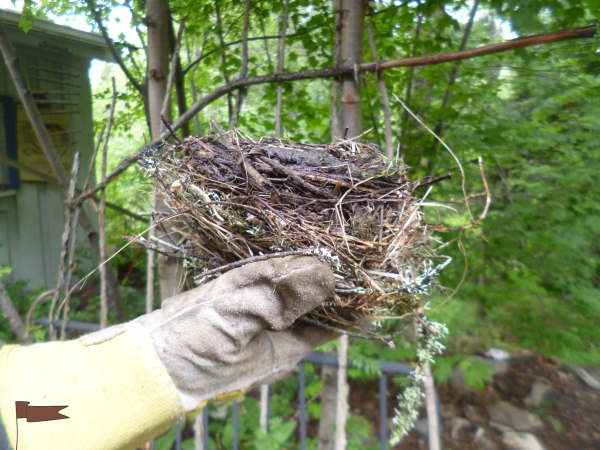 Side view of a robins nest, knocked out of the tree by a dastardly squirrel
Side view of a robins nest, knocked out of the tree by a dastardly squirrelThe first few weeks are when they get comfortable in the garden, finding a food source, and checking out the availability of nest making materials; straw, grass, finer twigs, and mud for the inner part.
The construction of the nest starts, sometimes in the evening. There will be a lot of activity in the trees near where their chosen spot is. They'll fly back and forth, hiding if they see you, pretending that they haven't decided yet.
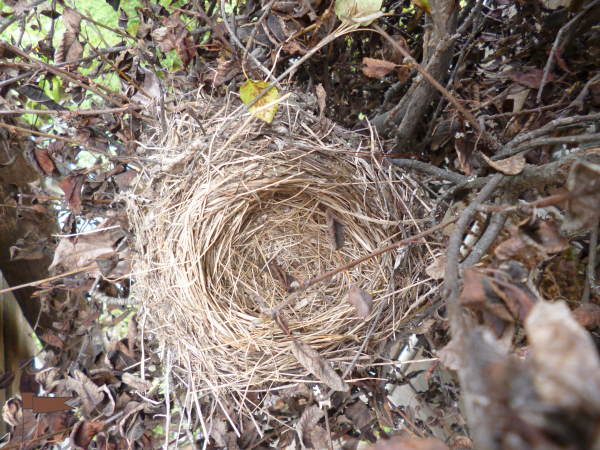 Smaller nest, unknown species of bird
Smaller nest, unknown species of bird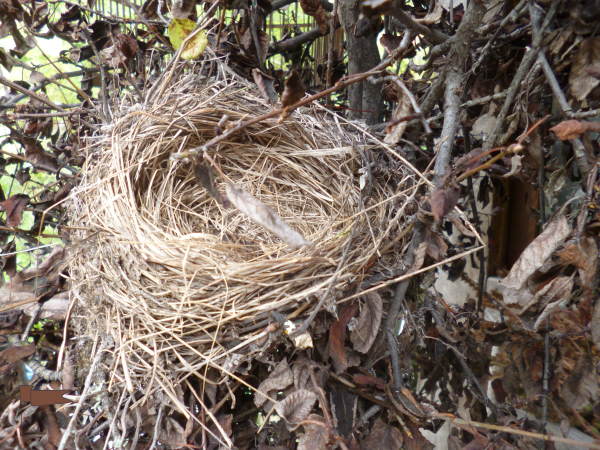 Pictured from the side, the same nest
Pictured from the side, the same nestThen the nest construction starts in earnest. By the morning, you'll notice them flying into the same spot in the tree, but often, the nest itself is so well hidden you won't be able to see it.
They will hang a long piece of grass somewhere near to navigate by. The male and female both build the nest, but the final phase, when the mud is transported to the inner face of it, is done by the female. She has to form it to her body, so when it dries, it's the perfect size and shape.
For four or five days, this is the total focus to their activity.
The male robin will sometimes hop around on the lawn, looking for worms.
Sometimes, the female will fly down to where he's calling her, and she'll go into the same posture as a baby robin, crouching, flapping her wings behind her back and generally begging. He'll feed her, just as though she was a youngster.
Sad news today; we found the completed nest on the ground, upside down, along with one crushed egg.
It looks like the squirrel got at it.
We can hear the mother off in the trees, giving little chirps of despair. We know that with the carnage of the nest destruction happening so close to the beginning of the brood cycle that they'll quickly build another nest, hopefully where the dastardly squirrel won't destroy it.
Update; the squirrel was spotted hot footing it across the lawn, after destroying the nest (this time on the woodshed) with one freshly laid blue egg in it. The robin family has departed the area.
It's illegal to remove a nest, but sometimes, if you find one that's been knocked down by a predator, or blown out of the tree by the wind, you can inspect it closely to see how it's been built by these ingenious creatures.
With interest, we inspected the downed nest. It's such a marvel of engineering!
The first layer is several lichen covered twigs from a Douglas Fir tree. These are flexible but strong. Then layers of fine twigs and longer grass stems are woven in and around them. You can see the bottom of the nest where it was securely held by two branches.
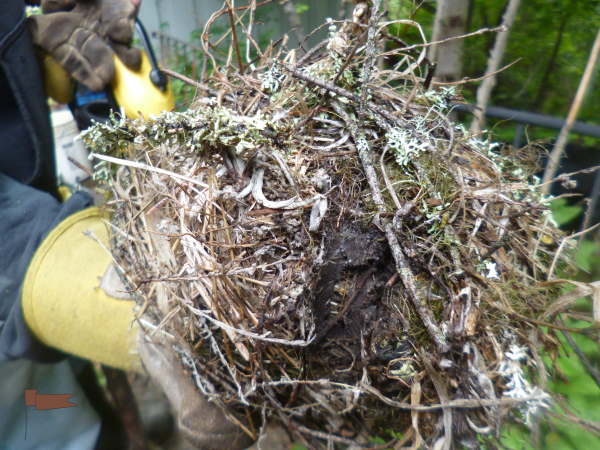 The bottom of the nest shows how it was formed on two branches
The bottom of the nest shows how it was formed on two branchesThe next layer is the mud, brought by the beakful to the nest, from a puddle somewhere.
This is daubed in a layer on the inside, and the female bird forms it with her body to be the perfect size. Then, the final step before egg laying commences; lengths of soft grass leaves, wound around in the center, again, by using her body to make a cozy, warm, yet well drained space for the eggs and chicks when they hatch.
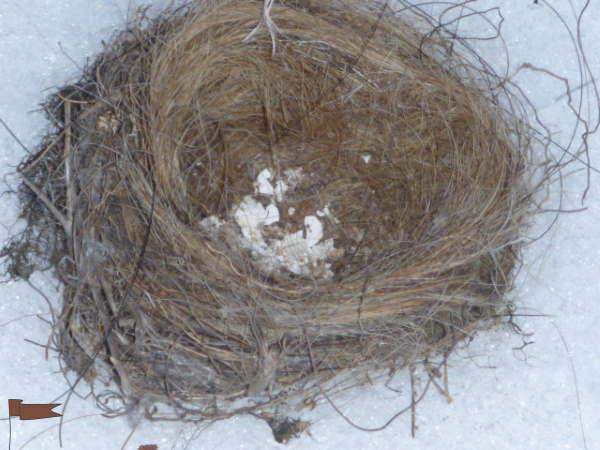 Smallest birds nest, lined with horsehair - that's a broken egg shell in the bottom
Smallest birds nest, lined with horsehair - that's a broken egg shell in the bottom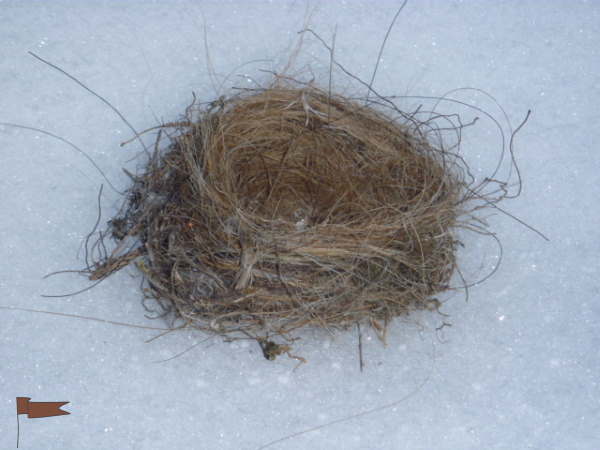 Horsehair lined birds nest, from the side
Horsehair lined birds nest, from the sideAll birds that make nests have the ability coded into their genetics. They all make similar structures, but they all have unique differences, depending on what's available for making the nest in their local area.
They are adept at using whatever they can find, to raise their young, including horse hair, dog brushings, sheeps wool, twigs, yarn, even bale string which can pose a problem to birds like hawks when the young birds get their feet tangled in it and fall out of the nest to dangle until dead.
